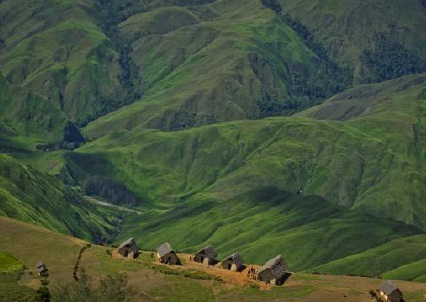“I have a new appreciation for pilots”, remarked one member of the survey team after returning from four airstrips that were being evaluated for safety. These airstrips are not for commercial airline jets or the casual flier. They have been carved into the sides of mountains, along flowing rivers and on top of ridges, in order to provide access to some of the more remote areas of Papua New Guinea.
For many communities, it is the only way to get coffee and produce to market without carrying it on their backs for several days. Coffee and produce are often the main cargo but it is also the lifeline to hospitals and health care that is not immediately available in the local village. Government and education officials, church and missions groups, and international aid agencies need these strips in order to gain access to these remote areas.
The airstrips are grass or packed dirt and require ongoing maintenance by the villages that they service. If the runways are not properly maintained, they quickly become unsafe for the planes to land, and access is cut off.
Many villages make it a high priority to keep the airstrips open. “Pilots have a great appreciation for the hard work that many communities do in order that we can better serve them. It’s not easy to cut the grass on these strips. Few strips have lawnmowers so it often requires many villagers using bush knives,” remarked one pilot.
Many villages make it a high priority to keep the airstrips open. “Pilots have a great appreciation for the hard work that many communities do in order that we can better serve them. It’s not easy to cut the grass on these strips. Few strips have lawnmowers so it often requires many villagers using bush knives,” remarked one pilot.
Not all airstrips make the grade. Approximately ten to fifteen strips are closed each year due to unsafe conditions. Some are reopened when improved but the number of available strips is rapidly decreasing. Erosion, poor drainage and rough ground are some of the most frequent reasons for closing strips. Ants can destroy a landing zone by creating areas that soften the ground. Communities work together to remove these areas by replacing them with packed dirt or gravel in order to maintain the hard surfaces needed for landing airplanes. Drains are cut into the runways and covered over so that water can move quickly off the airstrips.
One language development worker commented, “I am so grateful for these airstrips because access to the community I serve takes 25 minutes instead of a 2 day hike.”


